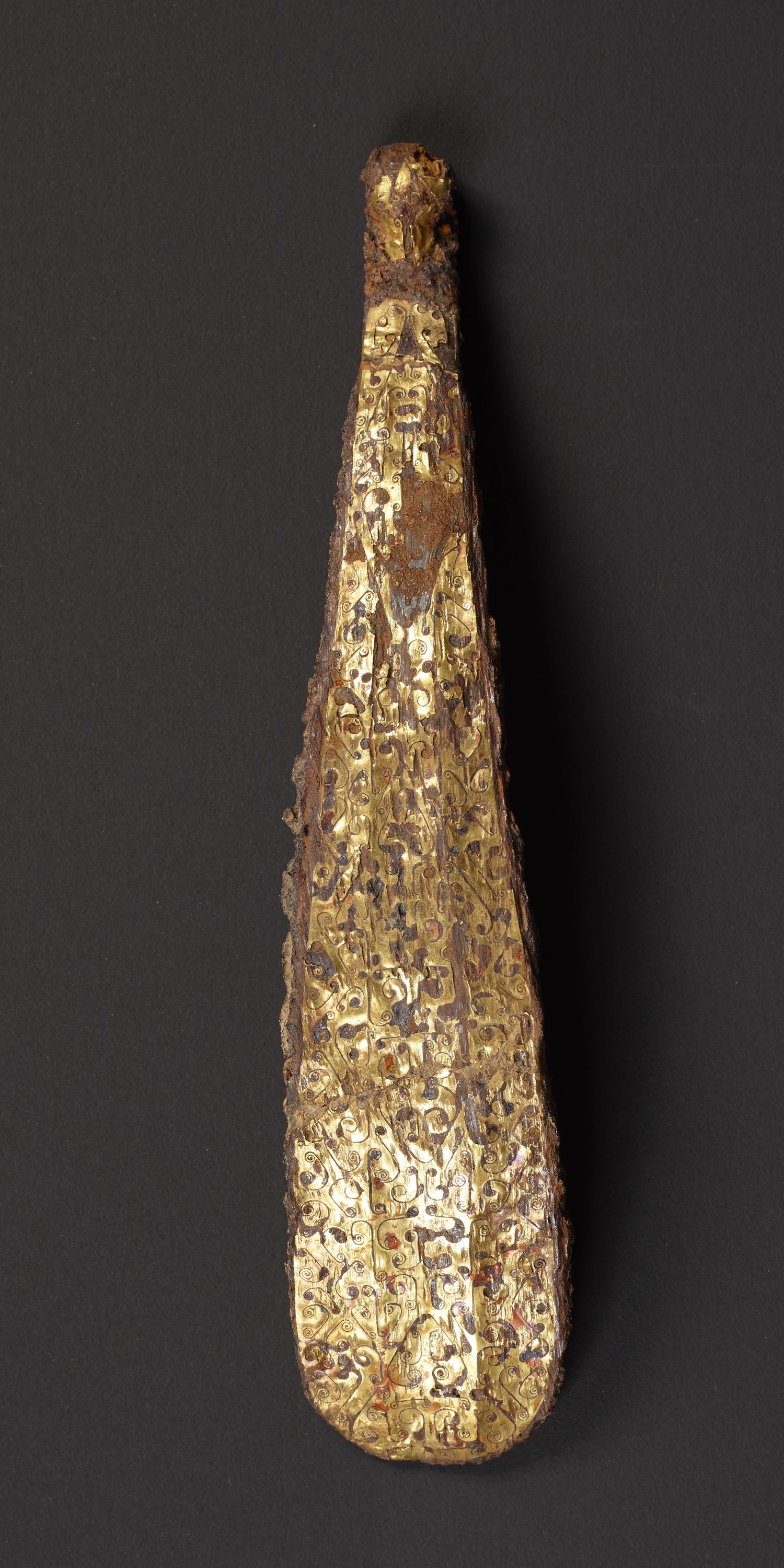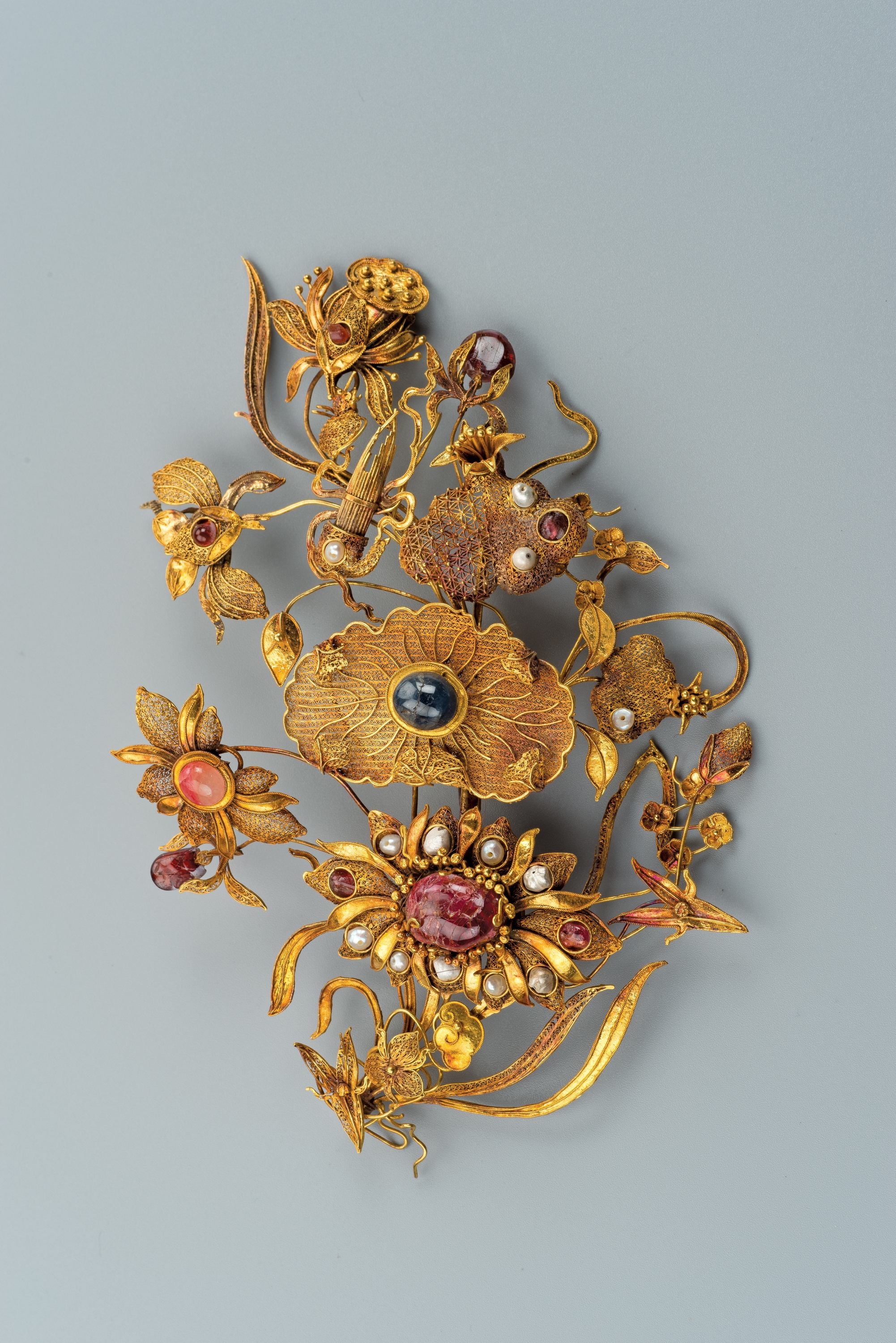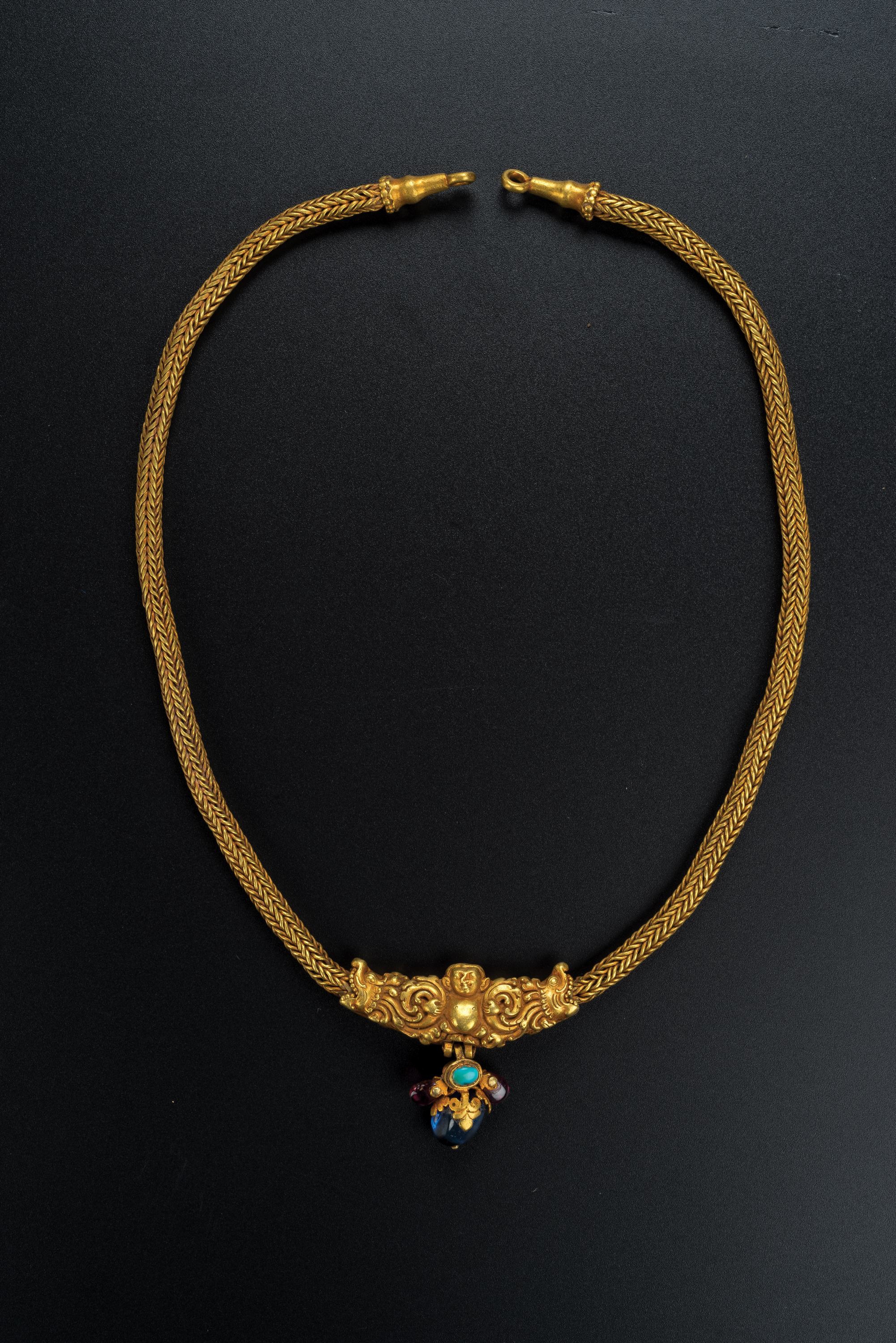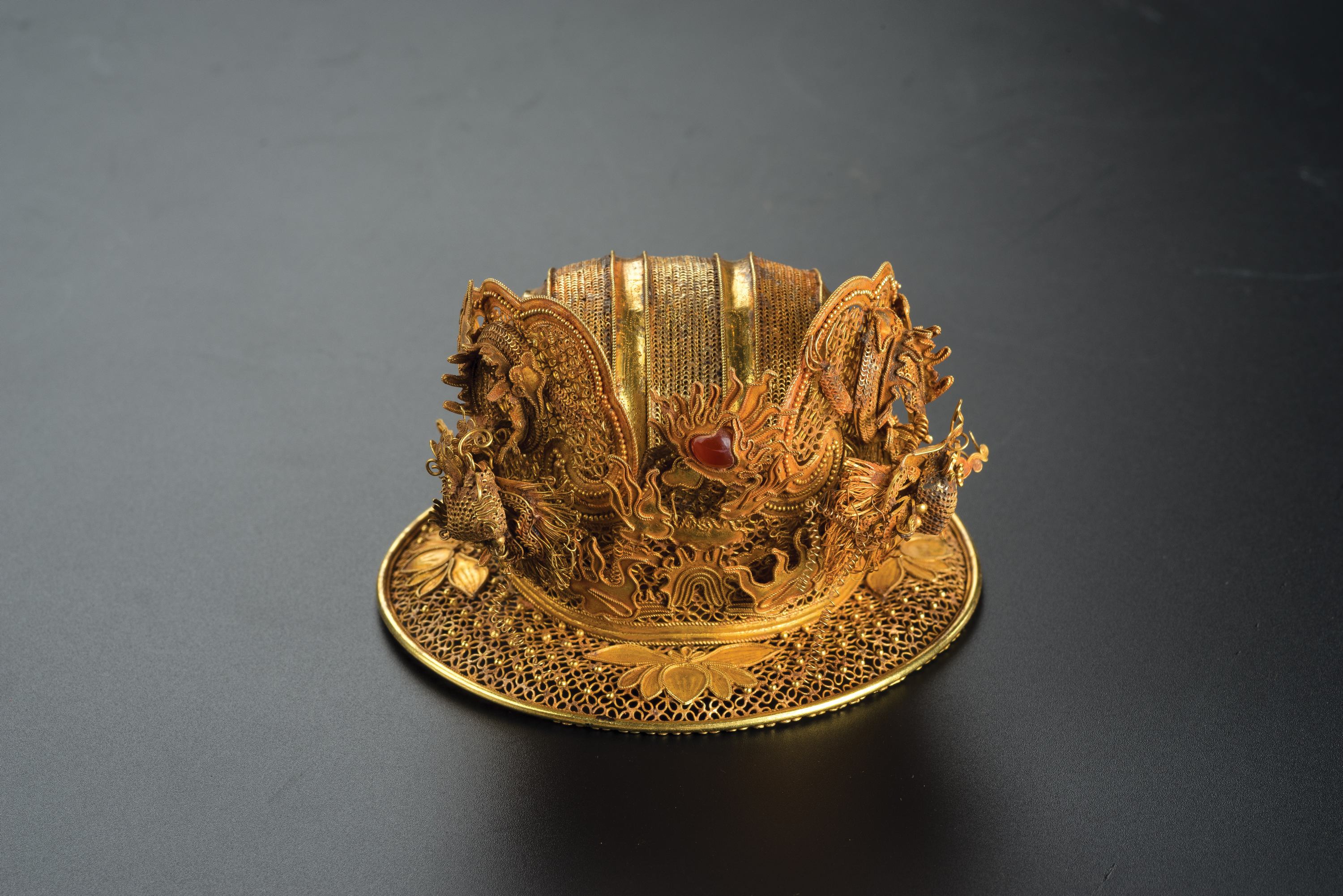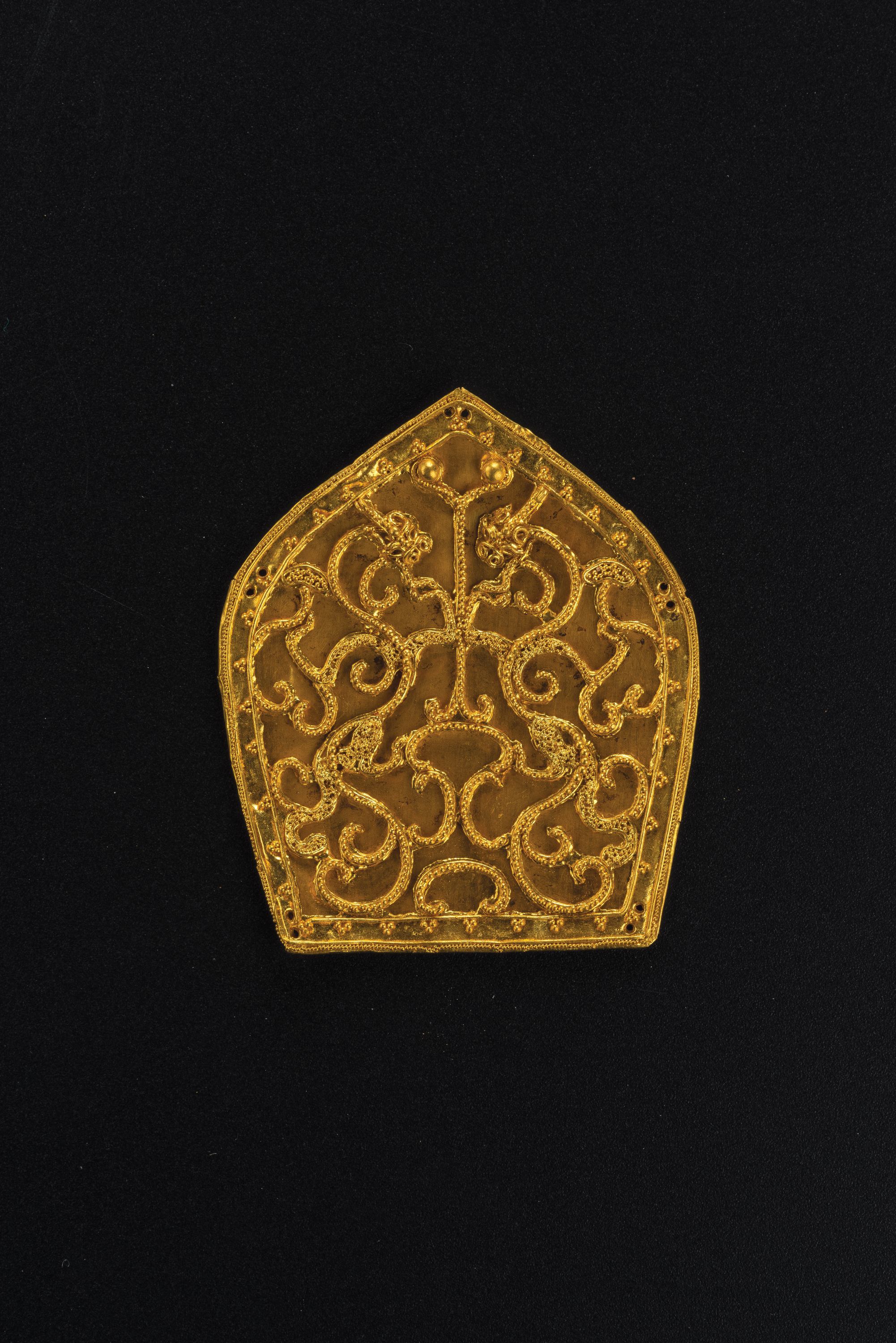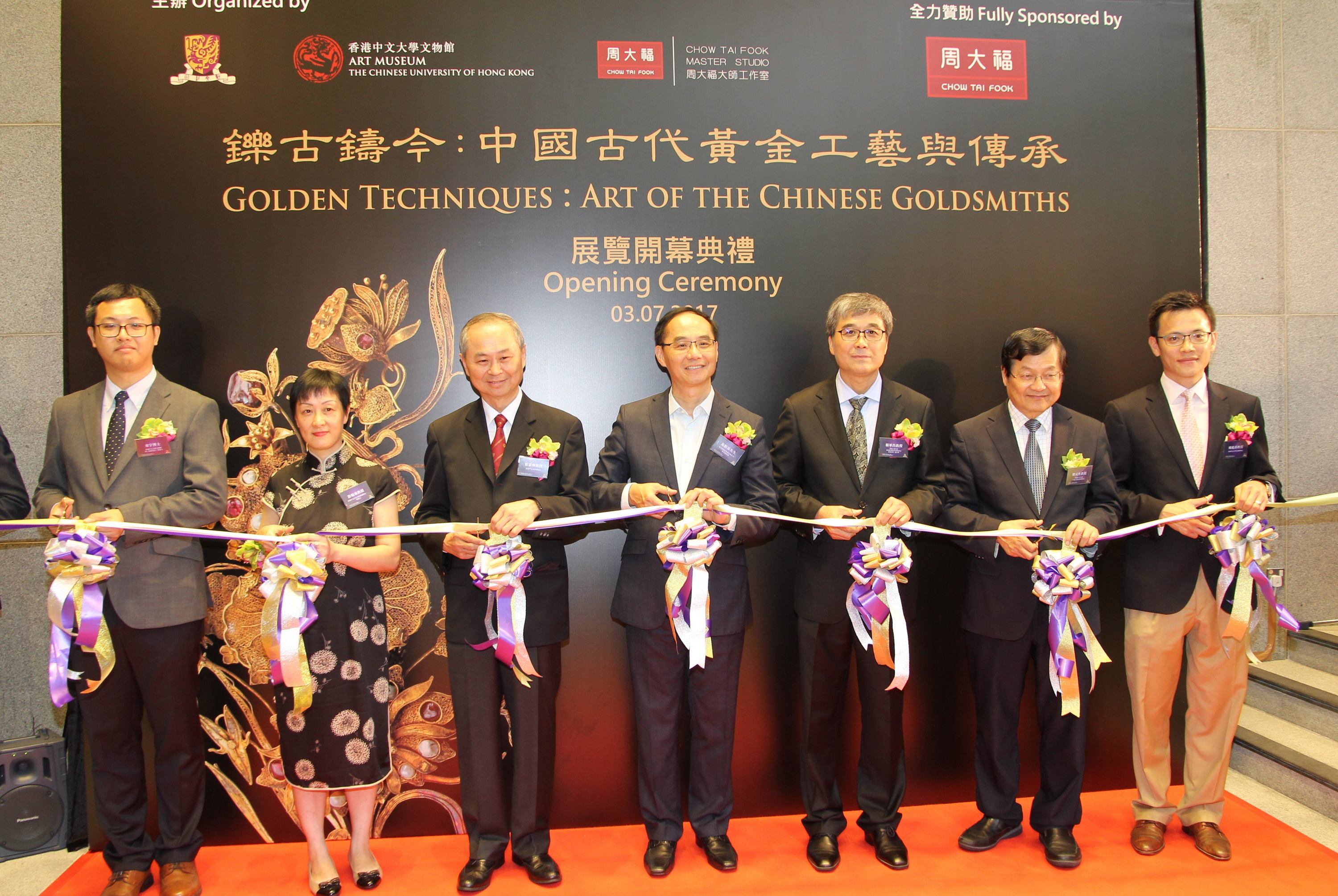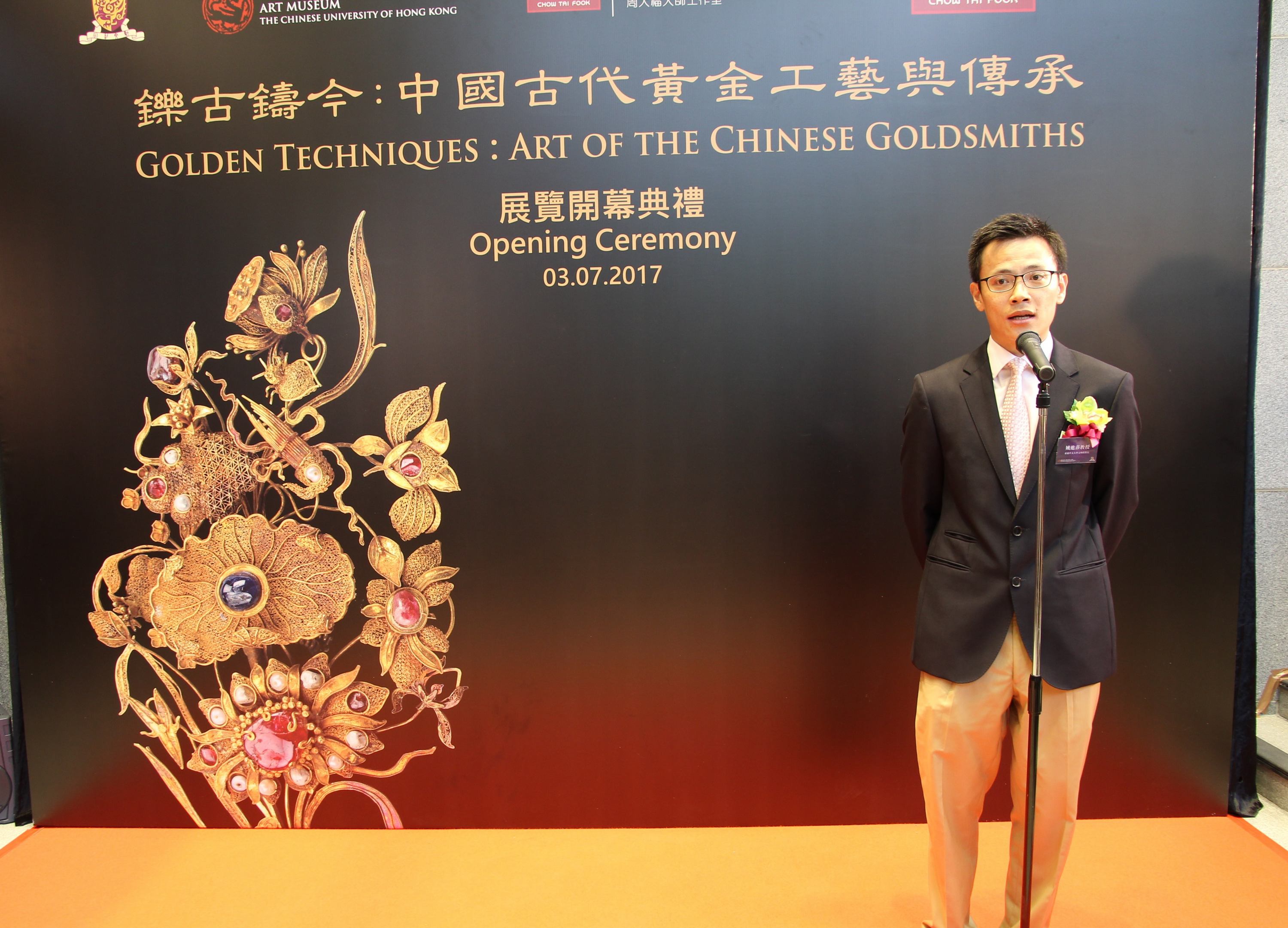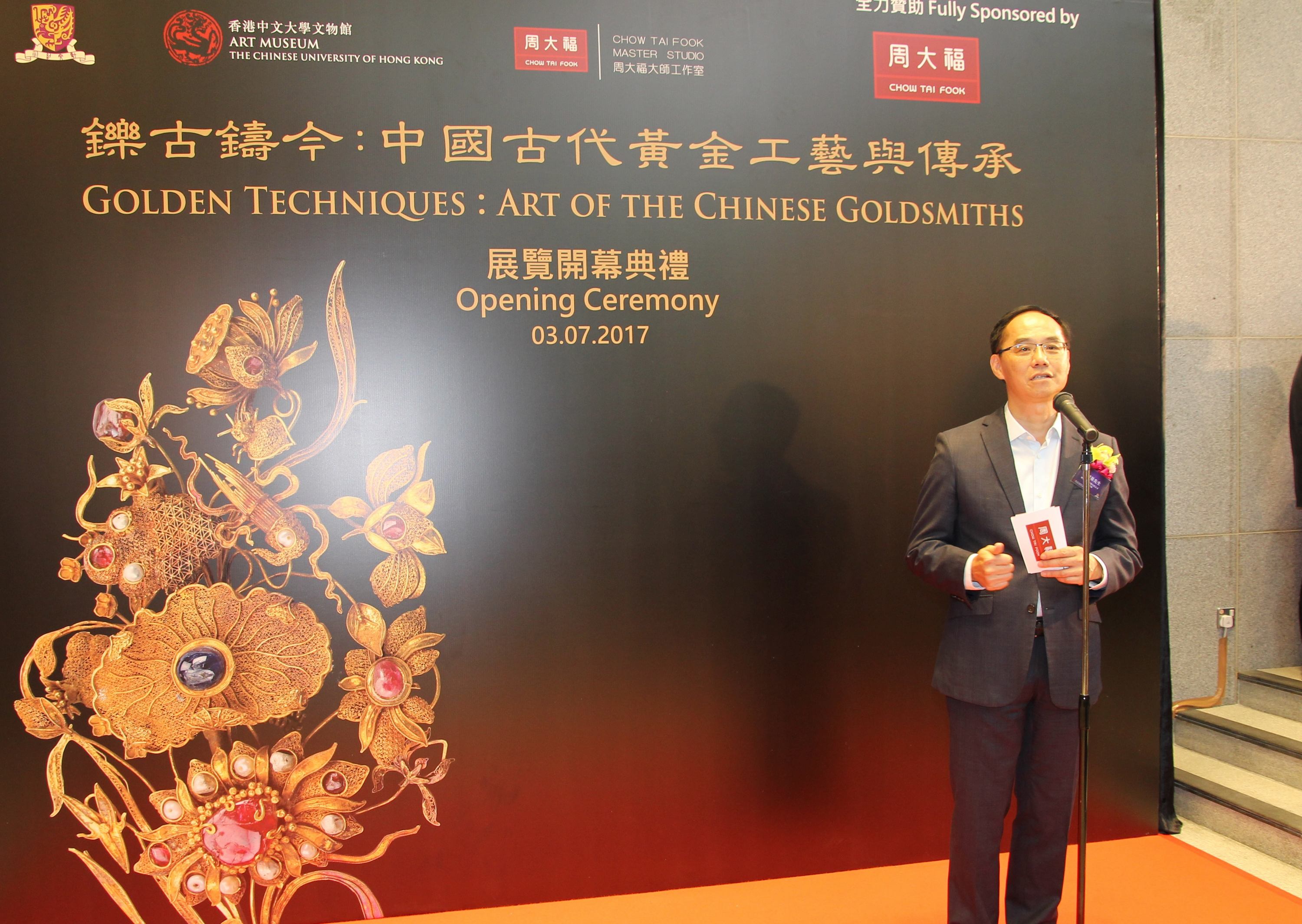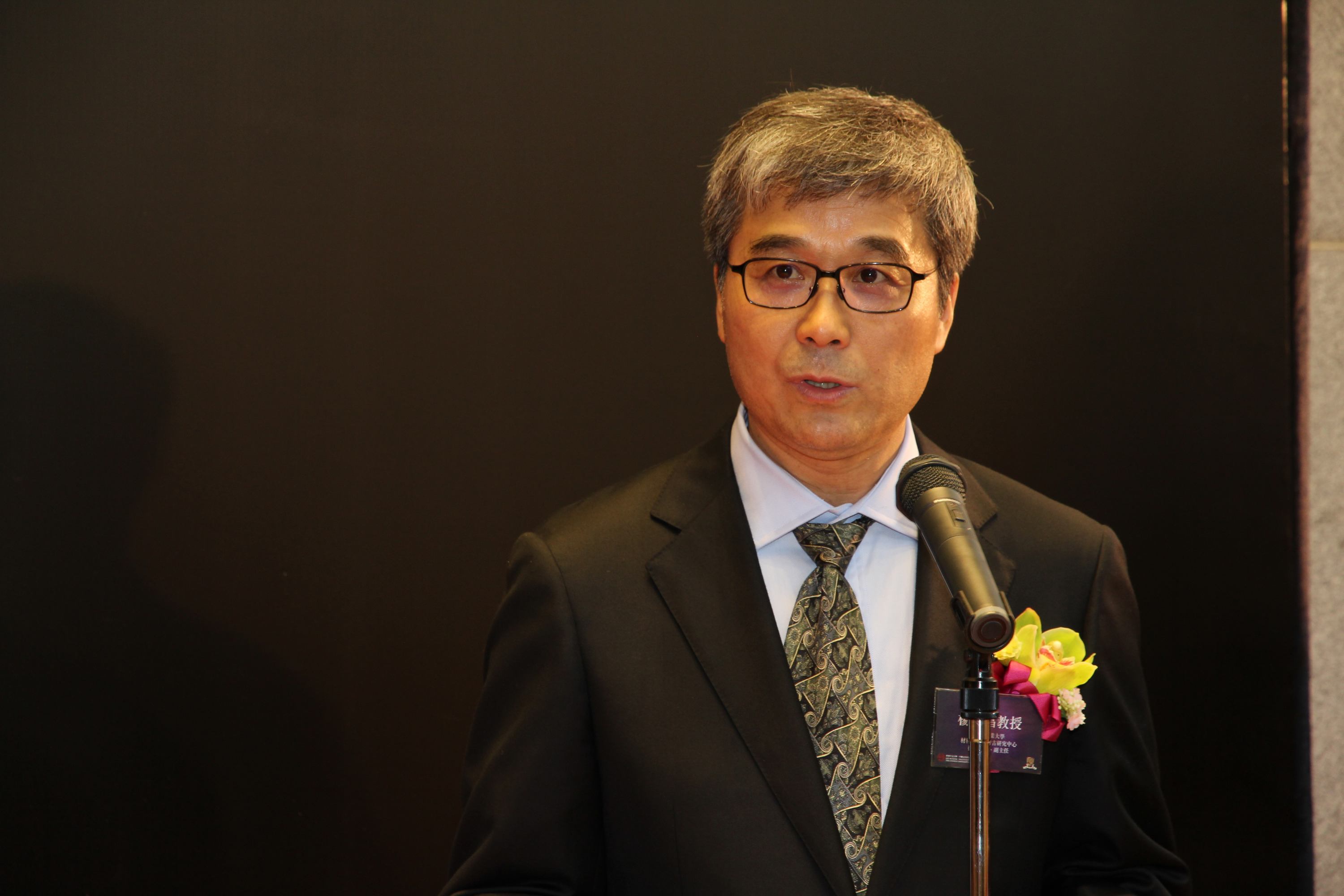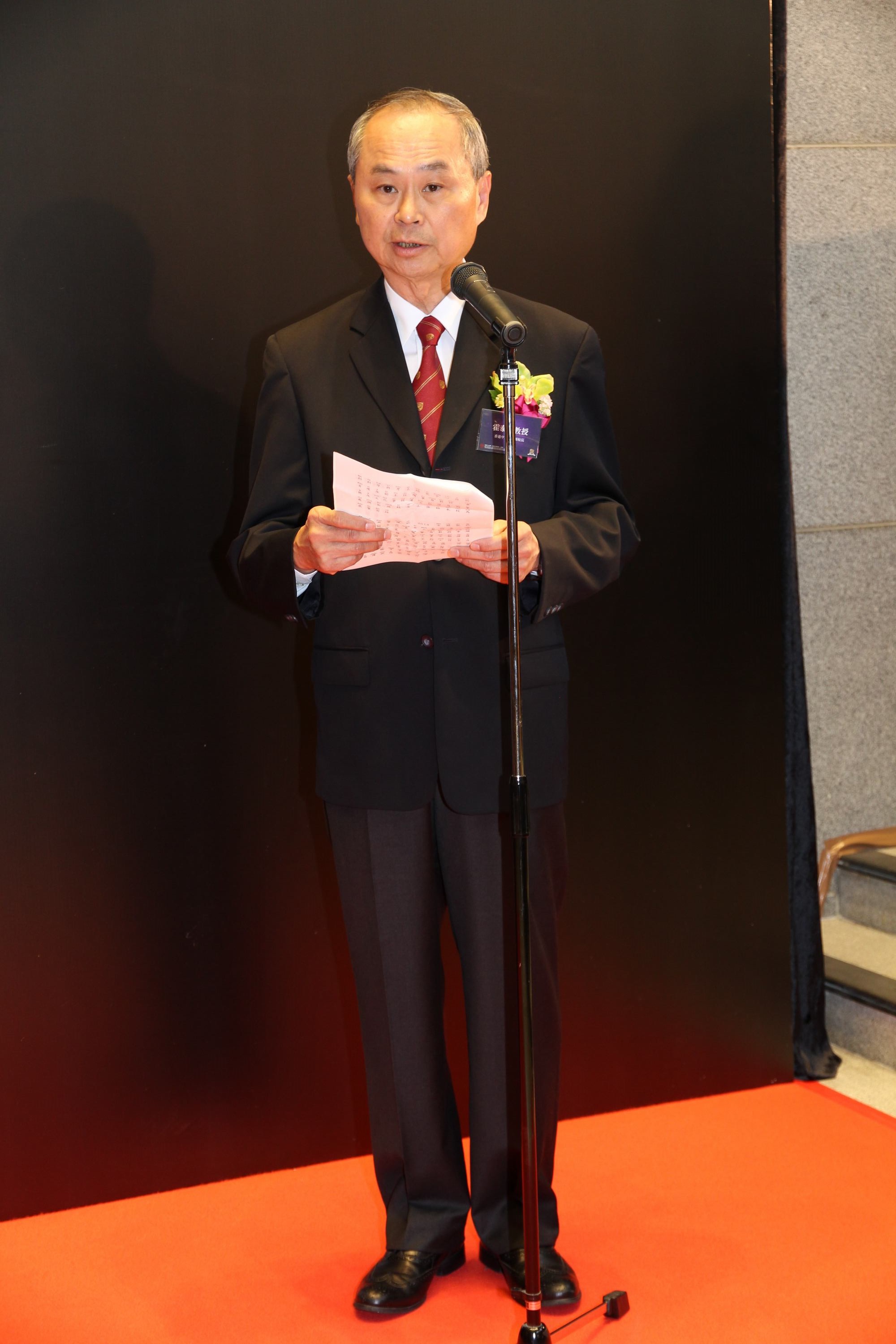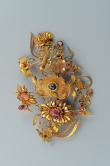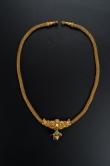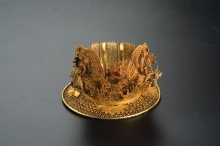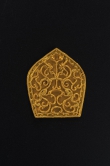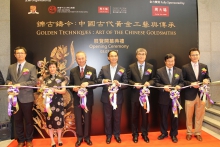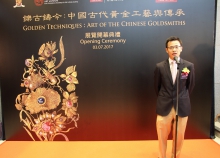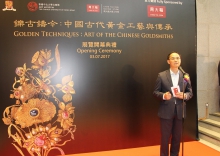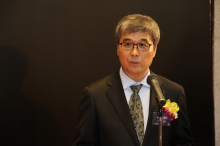CUHK
News Centre
CUHK Art Museum Exhibits Periodical Achievements of Ancient Chinese Gold Working Techniques Research Project
Golden Techniques: Art of the Chinese Goldsmiths is co-presented by Art Museum of The Chinese University of Hong Kong (CUHK) and the Master Studio of Chow Tai Fook. The exhibition, from tomorrow (4 July) to 27 September 2017 at Art Museum, features over 40 pieces (sets) of carefully-selected ancient Chinese gold and silver wares from private collections as well as the collection of Art Museum, and samples from reconstruction experiments as well as traditional goldsmith’s tools, both from the Master Studio of Chow Tai Fook. Members of the public are welcome to visit the exhibition. Admission is free.
The opening ceremony of the exhibition was held today (3 July). Those present included Mr. Wong Siu-kee, Managing Director of Chow Tai Fook Jewellery Co. Ltd; Prof. Yang Junchang, Chief Scientist, Associate Director of the Centre for Materials and Conservation Research in Archaeology, Northwestern Polytechnical University; Prof. Fok Tai-fai, Pro-Vice-Chancellor and Vice-President of CUHK; Prof. Leung Yuen-sang, Director of the Institute of Chinese Studies, CUHK; Prof. Josh Yiu, Director of Art Museum, CUHK; Prof. Xu Xiaodong, Associate Director of Art Museum, CUHK, and Dr. Tong Yu, Postdoctoral Fellow of Art Museum, CUHK.
The research project ‘Ancient Chinese Gold Techniques’ is a collaborative effort of Art Museum of CUHK, the Shaanxi Institute for Preservation of Cultural Heritage, the Master Studio of Chow Tai Fook, and the Conservation Office of the Leisure and Cultural Services Department of Hong Kong starting from 2014, for the first time using interdisciplinary research methods to reconstruct several major ancient goldsmith techniques and the history of their development. The exhibition will bring the cutting-edge findings of ancient Chinese techniques used to make gold and silver objects, emphasizing on granulation (making gold granules and welding them onto the object) and gold wire techniques, as well as techniques used to make gold inlays. During the exhibition, guided tours and a series of public lectures will be organized that aim to provide the audience with different museum experiences and a deeper understanding of the exhibition subject.
To complement with the research project, a public seminar on Gold Working Techniques of Ancient China was held in early January 2016. The seminar invited professionals from Mainland China and Hong Kong as speakers, and attracted more than 200 attendees. Another gold exhibition, History of Gold: Masterpieces from Shaanxi is open for the public on 23 June until 24 September 2017.
Both the exhibition and the entire research project are fully sponsored by Chow Tai Fook Jewellery Co. Ltd.
Details of the exhibition are as follows:
| Exhibition Period: | 4 July to 27 September 2017 |
| Exhibition Venue: | Art Museum, Institute of Chinese Studies, CUHK |
| Opening Hours: | Mondays to Wednesdays, Fridays and Saturdays: 10:00am-5:00pm Sundays and Public Holidays: 1:00pm-5:00pm |
| Closed: | Thursdays (Except Public Holidays) |
| Enquiries: | 3943-7416 |
Attachment: Highlighted exhibits
Gilt Iron Belt Hook Late warring states period, 5th century BC Total length 18.5 cm, width 3.5 mm Art Museum collection, gift of Dr. Simon Kwan With an animal head and a lute-shaped body, this piece is decorated with gold in geometrical pattern. It was believed that the gold layer was inlaid on the hook. However, scientific testing proves that it is prepared by mercury fire gilding. Similar hooks are found in mid-to-late warring states tombs of Qiao village, Houma city, Shaanxi province.
Gold Leisi Filigree Hairpin with Lotus and Shen Instrument Design and Precious Stone Inlay Qing dynasty (1644–1912) Length 13.8cm, weight 54.5g Chengxuntang collection The filigree hairpin heads comprise lotuses with buds, leaves and pods, having inlays of pearls and gems, beading edges and ribbed veins. In addition to the vegetative motifs, there is a sheng (mouth organ) with a beetle-like insect next to it. All the components are attached to gold wires and bundled together. The Lian (lotus) and Sheng form a pun for “consecutive promotions”. The beetle is a symbol for riches. The design, therefore, bequeaths a promising and lucrative career as an official.
Gold Necklace with Makara Design Northern dynasties or earlier, 2nd to 6th century Length 47 cm, pendant length 4.4 cm, weight 119.9 g (complete) Mengdiexuan collection This exquisite necklace comprises a chain with conical ends capped by a circular loop, and a pendant. The loop-in-loop chain is made of eight interwoven gold wires and connected to the pendant with gold nails. The pendant is intricately worked to form a human figure with a depression in the middle of the forehead that resembles a ‘third eye’. The figure has a big belly and holds two makaras by their tails as they bite the ends of the chain. Suspended from below his belly is a second pendant in the form of a lower inlaid with red, blue and green gemstones, adding colour to an already luxurious gold ornament.
Leisi Filigree Bun—Net with Two Dragons Ming dynasty (1368–1644) Diameter 9.6 cm, Height 6.4 cm, Weight 138.5 g (inlays included) Mengdiexuan collection The underlying shape of this hair ornament is made of filigree, and consists of a hemispherical, ribbed top attached to a round, flat, collar-like base. The top and base are joined with gold foil, while the standing wing-shaped ornaments at the sides and back are attached to the base with hooks. Holes on the sides of the base enabled the whole accessory to be secured to the head. The ornament is elaborately decorated. Bats and lotus flowers decorate the top and the collar below. The wing-shaped ornaments are embellished with five-clawed dragons chasing an inlaid flaming red gemstone amidst cloud scrolls. The dragons’ necks are made of springs so that their heads would sway with movement.
Gold Plaque with Double-Dragon Design Han to Six Dynasties, 2nd century BC–6th century AD Length 4.6 cm, Width 3.9 cm, Weight 8.5 g Mengdiexuan collection This piece is an ornament on government official’s headdress during the Qin–Han period. It is related to both Buddhism and Daoism. On the piece are two confronted dragons, whose bodies are covered by gold granules. The gold wires are scientifically proved to be twisting strips.
(From left) Dr. Tong Yu, Postdoctoral Fellow of Art Museum, CUHK; Prof. Xu Xiaodong, Associate Director of Art Museum, CUHK; Prof. Fok Tai-fai, Pro-Vice-Chancellor and Vice-President of CUHK; Mr. Wong Siu-kee, Managing Director of Chow Tai Fook Jewellery Co. Ltd; Prof. Yang Junchang, Chief Scientist and Associate Director of the Centre for Materials and Conservation Research in Archaeology, Northwestern Polytechnical University; Prof. Leung Yuen-sang, Director of the Institute of Chinese Studies, CUHK; and Prof. Josh Yiu, Director of Art Museum, CUHK officiate at the ribbon-cutting ceremony for the exhibition.
Prof. Yang Junchang, Chief Scientist and Associate Director of the Centre for Materials and Conservation Research in Archaeology, Northwestern Polytechnical University delivers a speech.


